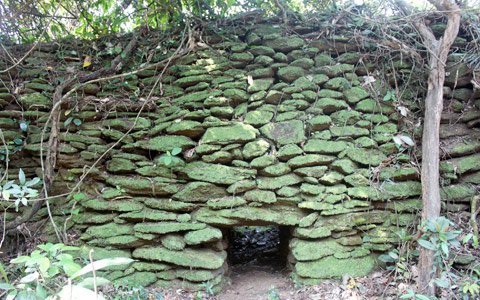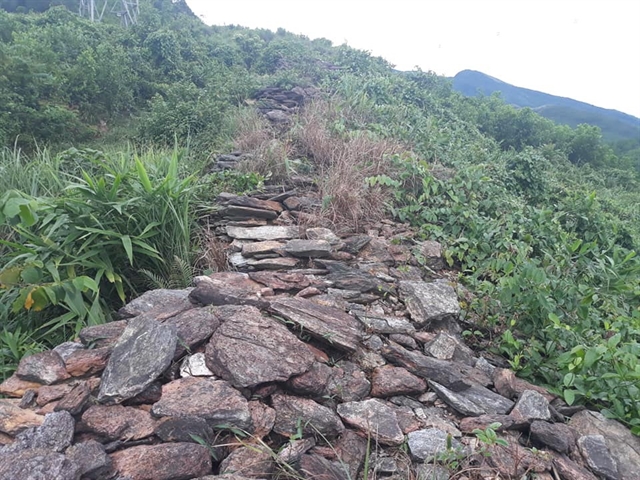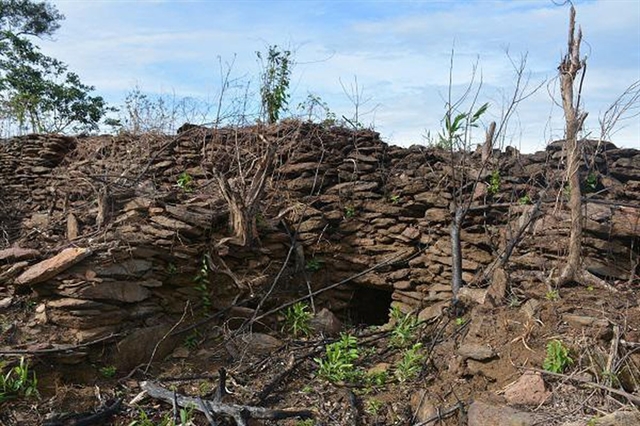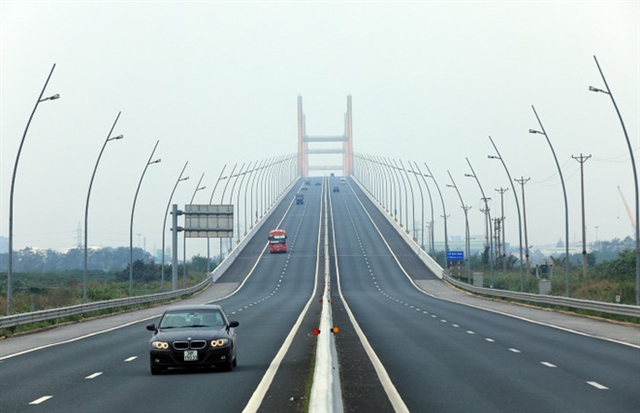 Life & Style
Life & Style

A stone wall dating back to the fourth century in the central province of Hà Tĩnh is set to be restored thanks to a VNĐ2 billion (US$86,100) project.
HÀ NỘI — A stone wall dating back to the fourth century in the central province of Hà Tĩnh is set to be restored thanks to a VNĐ2 billion (US$86,100) project.
According to Đặng Quốc Vinh, permanent vice chairman of Hà Tĩnh’s People’s Committee, Kỳ Lạc Commune authorities would be responsible for the renovation work, which would include clearing wild bushes encroaching on the wall, building a metal fence around the wall and installing cement supports.
“Authorities will put the job out to tender and if everything goes smoothly, work will start in November,” said Nguyễn Thái Toàn, chairman of Kỳ Lạc Commune.
The wall runs from east to west for nearly 30km, stretching from the foot of Bụt Pass to Hoành Sơn Mountain.

|
| The wall runs 30km up to Hoành Sơn Mountain. — Photo dantri.vn |
The wall runs through today’s communes of Kỳ Lạc, Kỳ Hoa and Kỳ Lâm in Kỳ Anh District.
Since 1993, archaeologists have been conducting research at the site. In April 2012 scientists from the Việt Nam Archaeology Institute, French School of Extreme East (École Française d'Extrême-Orient), and Hà Tĩnh Provincial Museum conducted large-scale research on the structure
The researchers established the wall had been built from sedimentary stones which had bonded together over the years.

|
| Many parts of the wall have fallen away. — Photo dantri.vn |
The wall stands over 3m high and is 1.2-2m wide. Along the wall, there are holes every 3-4m which were designed in a wedge shape to protect the soldiers, similar to arrow slits found in western castles.
Lê Bá Hạnh, former director of Hà Tĩnh Museum, said the holes may have also been used to observe the enemy and for drainage.
According to various historical documents, the wall was part of the Chăm Pa Kingdom's Lâm Ấp Citadel.
Work on the citadel started in the fourth century and it was renovated by the Chăm people to protect their border.
In the 17th century, during fighting between the Trịnh and Nguyễn lords, Lord Trịnh Toàn ordered the wall to be shored up to protect his northern territory from attacks from the south.
Documents say that between 1655 and 1672, fierce fighting took place at the site between the Trịnh and Nguyễn.
According to Hạnh, the wall is a one of a kind in the country, and holds cultural and historical values.
In 2014, the Ministry of Culture, Sports and Tourism recognised the structure as a National Archaeological Site.

|
| The relic is on the verge of collapse. — Photo sggp.vn |
Many parts of the wall have fallen away and most of the area is overgrown with wild climbers and trees.
“We hope the renovation project will help restore the glorious beauty of the wall so it can become a tourism destination,” said Toàn. — VNS




